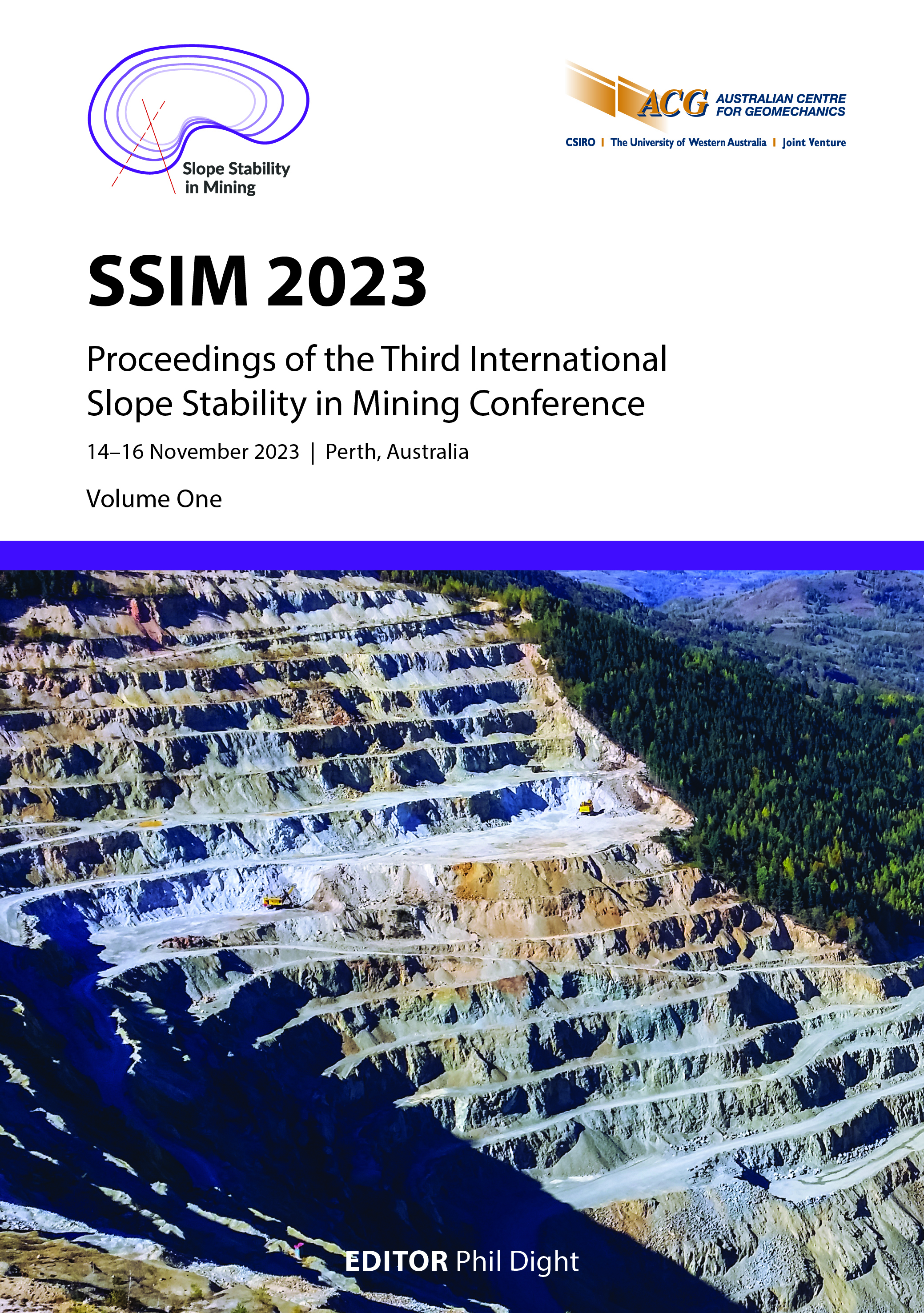Development of Leeb hardness field test methodology to be used during rock core logging

|
Authors: Nasir, MA; Powell, C |
DOI https://doi.org/10.36487/ACG_repo/2335_33
Cite As:
Nasir, MA & Powell, C 2023, 'Development of Leeb hardness field test methodology to be used during rock core logging', in PM Dight (ed.), SSIM 2023: Third International Slope Stability in Mining Conference, Australian Centre for Geomechanics, Perth, pp. 505-518, https://doi.org/10.36487/ACG_repo/2335_33
Abstract:
This study investigates the use of non-destructive Leeb hardness testing as an alternative to conventional rock strength evaluation field tests including using geological hammers and point load testing devices. Conventional methods are noted to be subjective and/or potentially dangerous, resulting in rock fragment ejecta attributed to causing injury including blindness. Leeb hardness testing offers a safer approach with the potential for improved reliability and data, and standardisation of results. Testing is performed on diorite, andesite and dolerite igneous rocks retrieved as NQ size rock core during diamond drilling at the Newmont Boddington Gold Mine. A field-testing methodology is developed through a detailed data-driven familiarisation process to determine the sensitivity of Leeb hardness test results. Hardness testing is undertaken using the Equotip 550 device. Initial evaluation includes assessment of circumferential and longitudinal test results, separation between test locations and number of repeat tests per location, statistical evaluation, comparison of proximal results on vein structures (i.e. quartz) and country rock, effect of inclination of test device, applied pressure during testing and wet versus dry conditions. The effect of sample seating is also evaluated, comparing results of testing core laying within plastic core tray grooves to core laying in steel v-notch grooves often used during orientation of rock core. Using the empirically derived methodology, testing is undertaken at metre marks along rock core in plastic core tray grooves. Results from multiple drill holes are included in the study. Testing is also performed on core samples sent to the laboratory for determination of parameters including uniaxial compressive strength (UCS). Correlational factors between Leeb hardness and UCS, density test results are derived through assessment of the field and laboratory test results and compared with published data. The methodology offers a relatively quick, safe and reliable way of determining and understanding rock strength and parameter variation along the length of rock core and, more widely, within the rock mass ultimately being evaluated.
Keywords: Leeb hardness, Equotip, field test, UCS, non-destructive, rock core, safety, strength
References:
Akbay, DA & Ekincioglu, GE 2022, ‘Estimating the brittleness values of carbonated rocks with Shore, Schmidt, and Leeb hardness values’, Environmental Earth Sciences, vol. 81,
Ghorbani, SG, Hoseinie, SHH, Ghasemi, EG & Sherizadeh, TG 2023, ‘Adoption of ASTM A956-06 Leeb hardness testing standard to rock engineering applications’, Construction and Building Materials, vol. 364,
article/abs/pii/S0950061822035425
Hoek, EH & Brown, ETB 1997, ‘Practical estimates of rock mass strength’, International Journal of Rock Mechanics and Mining Sciences, vol. 34, no. 8, pp. 1165–1186,
Kovler, KK, Wang, FW & Muravin, BM 2018, ‘Testing of concrete by rebound method: Leeb versus Schmidt hammers’, Materials and Structures , vol. 51, no. 138,
Li, HL & Bradt, RCB 1992, ‘The indentation load/size effect and the measurement of the hardness of vitreous silica’, Journal of NonCrystalline Solids, vol. 146, pp. 197–212,
Proceq 2015, Equotip Operating Instructions (82035601E ver 11 2015), Proceq, Schwerzenbach.
Read, JRL & Stacey, P 2009, Guidelines for Open Pit Slope Design, CSIRO Publishing, Melbourne.
Yilmaz, NGY & Goktan, RMG 2018, ‘Analysis of the Leeb hardness test data obtained by using two different rock core holders’, Journal of Natural and Applied Sciences, vol. 22, no. 1, pp. 24–31,
© Copyright 2025, Australian Centre for Geomechanics (ACG), The University of Western Australia. All rights reserved.
View copyright/legal information
Please direct any queries or error reports to repository-acg@uwa.edu.au
View copyright/legal information
Please direct any queries or error reports to repository-acg@uwa.edu.au

